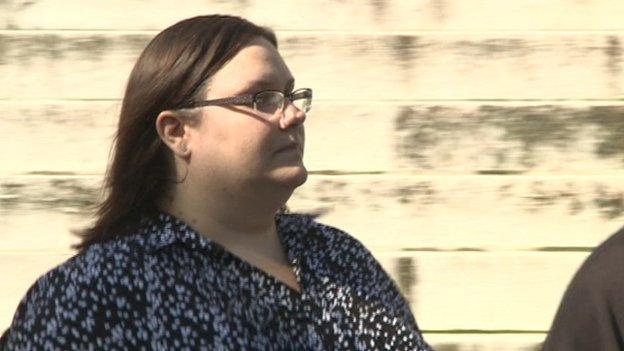How did your Welsh hospital perform in spot checks?
- Published
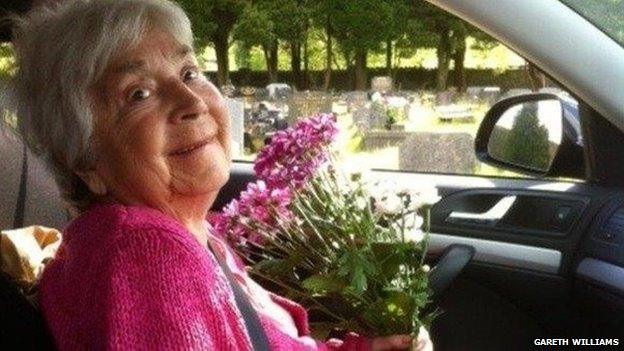
The spot checks were ordered following a report into the neglect of Lilian Williams, 82, at two hospitals
In the wake of a series of spot checks at 20 hospitals across Wales, here is a guide to how your hospital performed.
The inspections were ordered, external by Health Minister Mark Drakeford following the critical Trusted to Care report on elderly patient care.
It found failings in the care of Lilian Williams, 82, at two hospitals. She later died.
The checks looked the delivery of medication, hydration, night-time sedation and continence care.

Brecon War Memorial Hospital, external
Two wards inspected and seven improvements were recommended, including:
Remind and reinforce the professional responsibilities regarding the administration of medicines including recording reasons for omitted medications
Archive used medicines charts in patients' medical notes
Ensure a plan of care is developed for the individual patient with identified hydration needs. This was acted upon immediately.
Provide staff education/guidance to ensure a timely and appropriate plan of care for patients, particularly those unable to meet their hydration/ nutritional needs
Strengthen the ward entrance security in one of the wards. The doors were not secure and seen as a safety risk since patients could wander in and out
Three areas of good practice were identified, including:
Excellent signage on nurse in charge, nutrition, raising a concern, and the specific use of bins
Nightly checking of omitted medication doses and staff signatures

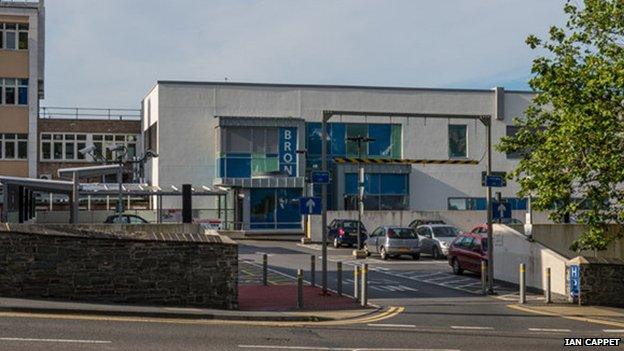
Three wards were visited and there were four areas for improvement:
Staff should receive education and support in managing patients with dementia and agitation
Alternative clothing to hospital gowns should be provided for patients that promote dignity
Staff need to improve completion of fluid balance charts
The hospital was asked to relocate medicine cupboards
In addition, the team also requested for immediate action to be taken in respect of hydration and oral care on one of the wards
As an example of good practice, the report says the transforming care patient information boards were used well.

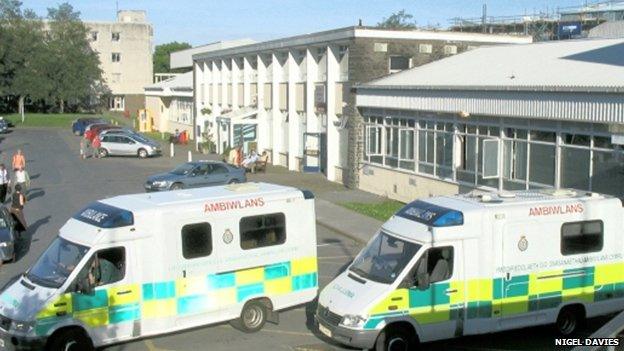
Four wards were inspected and 12 improvements identified, including:
Improve medicines security
Fit key pads to the medication/storage preparation room (raised on two wards)
Review frequency of 'top-up' medication
Provide refresher training for staff on the safe storage, security and administration of medicines
Review the combined use of continence pads and continence sheets
Ensure staff are aware of the health board's policy for dealing with swallowing problems
Action had already been taken on a number of the issues raised
There were nine highlighted examples of good practice, including:
Teaching boards for healthcare support workers
Stimulation / activities for patients
Weekend in-patient plan initiative

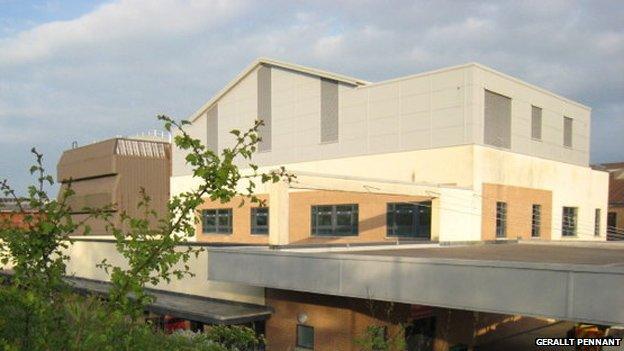
Four wards were inspected and seven improvements were identified including:
Increase the number of times water jugs are replaced to the minimum standard of three times daily
Ensure medical staff are aware of the importance of legible handwriting
Ensure staff are aware of their role and responsibility
The team also highlighted examples of good practice including:
The use of certain symbols to denote patient needs

Neath Port Talbot Hospital, external
Two wards inspected. All of the eight improvements required related to medication and included:
Ensure nurses know that they need to sign for drugs that they give out regularly
Review medication charts to make sure that they are completed
Provide a lock for the medicines storage room
Remind staff of their professional standards for medicines management
There were seven good practices highlighted including:
Pharmacy room checklist
Complete bed documents kept in a separate file at the end of the bed
Dementia champions on the ward

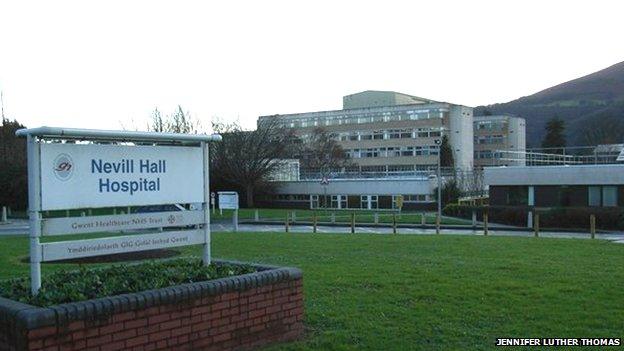
Major issues were found on one ward (4/1 Monnow). Inspectors were so concerned that they raised these issues immediately with the executive officer on call.
In this ward the inspectors considered that the dignity of two patients were compromised. Although one patient was described as self-caring, they did not agree. In the same patient their catheter care did not meet expected standards.
Another patient's drug chart was signed, indicating they had taken their medication, when it was still on the bedside table. The management and administration of drugs was poor and was witnessed to be potentially unsafe. There appeared to be evidence of a poor understanding within the ward with regard to drug safety and responsibilities.
Inspectors detected a strong smell of urine, with some areas worse than others.
Other wards were more positive. Overall, there were seven improvements required, including:
Making medication rooms and trolleys secure
Reviewing the process for writing up warfarin doses
Ten examples of good practice were highlighted, including:
A carers' clinic
Automated drug cupboards
Information and notice boards were user friendly
The way individual care plans were used and updated daily

Prince Charles Hospital , external
Four wards were inspected and 11 improvements identified with most of them to do with medication, including:
Ensure the pharmacy/drug preparation room was locked when not in use and consider changing the lock to a swipe card system
Review the practices of leaving potted up medication in the patient locker when patients leave the ward
Refresh/retrain nurses on administration of medicines
Make sure that nurses check the identification of patients when they give out medication on every occasion, even if they know the patient
Consider making hot drinks available for patients at 06:00 and 22:00
There were seven highlighted examples of good practice, including:
Looking at ways of ensuring 15-minute drink offers can be accurately recorded
"Drink a drop" initiative for patients at risk. This meant that patients at risk had a "blue water drop" sign on their bed. Staff would then offer 50mls of fluid to these patients every 15 minutes
Continence champion: Healthcare worker makes sure the patient has access to their preferred products.

Prince Philip Hospital , external
Two wards were visited and six recommendations were made, five of which for one ward. They included:
Ensuring the medicines round and patient observations are not undertaken at the same time as mealtimes
Ensuring staff are trained to meet all aspects of care for dependant patients
The second ward visited had a very positive report. The only recommendation was to review staffing levels. Examples of good practice were identified on this ward, including buying iPads through charitable funds for stroke patients to Skype their family and employing rehabilitation assistants to help rehabilitate patients.
The visit to Prince Philip hospital provided varying reports on both wards. The first was "cluttered and untidy throughout".
The review team stated that staff provided care but could have worked better as a team. While on site, the review team asked nursing staff to assist some patients. The storage and security of medicine was of concern.
A tray containing an uncapped, unlabelled syringe containing fluid was left on top of the worktop in the treatment room.
The second ward was described as clean and bright and "effective nurse leadership" was witnessed. The spot check found excellent practice in administering medication on this ward.
The report says patients were cared for with dignity and respect and most patients said their call bells were answered quickly though one patient said they had to wait 15 minutes, which compromised their continence needs. One patient described the nurses as "being run off their feet" which made them reluctant to call for support.


Four wards were inspected, and 11 improvements identified - mainly around the management of medication - including:
Improving the administration, management and security of medicines across wards
Ensuring all staff are updated on professional standards for medicines management
Ensuring timely completion of documentation
Ensuring staff undertake an all-Wales medication and drug chart e-learning package (raised as an issue for improvement on three out of the four wards)
On one ward, providing acute medicine/gastroenterology care, the concerns about medication administration and storage and their potential impact on patient safety and care were sufficiently serious for them to be raised immediately with the on-call executive
As a result, the report notes that swift action was taken to address the issues raised and put improvements in place.
Further concerns that staffing levels on one ward were not sufficient for patients with such complex card needs; however patients reported being "very happy" with their care.
There were 12 highlighted examples of good practice, including:
Screen-savers reminding staff about their responsibilities around hydration, continence and medication management
All registered staff trained to undertake swallowing assessments
Ward-based physiotherapist and access to gym close by

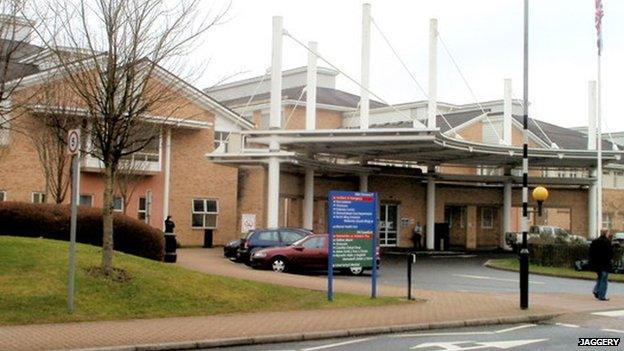
Four wards were visited and there were seven improvements raised, mainly relating to medication.
These included:
Highlighting the importance of legible writing on medication charts, and not using abbreviations when writing prescription charts
Ensuring medication cupboards meet required standards and are 'fit for purpose,' with locks in good working order
Reviewing the 'nil by mouth' policy for adults undergoing certain procedures/tests
Reviewing the system for alerting wards when tests or treatment are cancelled to ensure patients are not kept nil by mouth any longer than necessary
In respect of hydration checks, it was noted that on one ward, a patient had been left without fluids for 16 hours after their procedure was cancelled, but the ward not informed until some time later so the patient had remained nil by mouth.
One patient's bedside charts featured an incorrect name and identification details, despite them having been an in-patient for two days. In another case, the wrong patient's medication chart was found in another patient's notes.
There were seven examples of good practice highlighted, including:
Use of easily-visible pink folders containing patient charts, tools and special documents for dementia patients
Nil by mouth sign with prompt to provide regular oral care
Continence re-training programme for patients wearing continence pads
The inspectors commended a nurse who persisted in obtaining a "same day" speech and language therapy assessment for a patient recently transferred from another hospital
It was noted in the report that the health board had already taken action, or initiated it, on the points raised.

Royal Gwent Hospital, external
Four wards were visited. Concerns were raised about the administration of medicines. The inspectors found one example where patient identification did not appear to be checked before medicine was given.
The inspectors were broadly happy with sedation techniques, patient hydration and continence care but identified eight points needing improvement including:
The need to ensure that fluid charts are updated
Administration of medicines rounds should be revised, or a system introduced to support patients who wish to take their medication after supper
Ten areas of good practice were identified including:
Strong support from elderly, mentally, infirm liaison nurses
The use of a 'nurse in charge' badge so everyone knows who is in charge of the ward

Four wards were inspected. Five of the 11 improvements required related to medication and they included:
Improving and in some cases replacing the secure storage of medication
Ensuring staff were aware of their responsibility with regards to the security of medication
Patients spoke highly of the care they received, but one ward which was described as an elderly rehabilitation ward, was operating as an orthopaedic rehabilitation ward
The inspectors highlighted examples of good practice they felt would benefit other ward areas and hospital sites including the use of a "yellow book" for documenting missed drug doses and investigations of missed doses.

University Hospital Llandough, external
Four wards were inspected and 12 improvements were required, seven of them relating to medication, including:
Retraining staff in managing medication to ensure they reach professional standards
Replacing drugs storage trolleys, cupboards and fridges
However, there were concerns over the layout of wards and patients' furniture.
The hospital was asked to undertake a review of one ward, paying particular attention to the issues encountered due to the size and layout, on patient safety.
One ward (Ward 7 East) was found to be untidy and rubbish was visible on the floor in the main corridor. Dust and rubbish had been swept into piles that were present for the duration of the spot-check. There was lots of clutter around with the potential to cause trip hazards for patients to fall over.
The patients' day room needed tidying, equipment was stored everywhere including a bed waiting to be returned to another ward. The kitchen trolley with clean dishes on was observed outside the male toilet. There was an unpleasant odour, with a stale smell of urine in the area of the nurse's station and in some of the ward bays. The ward did not meet the expected standards of cleanliness.
Patients seemed happy, though one dementia patient had been moved numerous times. The patient had been in bed since arriving on the ward as there were no suitable chairs for him to use.
On the stroke rehabilitation unit, several patients and visitors stated that there was a shortage of speech and language therapy and this was causing delays to optimal recovery. They also mentioned a shortage of adequate and intensive occupational therapy.
Several examples of good practice were highlighted, including:
Patient journals (stroke unit)
A laundry to wash patients own clothes; relatives use this
Patient/relatives/carers/staff information boards


Four wards were visited. The review team made 13 recommendations as a result of its visit including:
Refurbishing the toilets on one ward "as a matter of urgency"
Reminding staff of the importance of offering and documenting toileting needs
Good practices included:
Very good fundamental care to a very dependent group of elderly people on one ward
Excellent communication skills shown by nursing staff
The spot check team found that patients on all the wards were provided with enough drinking water. On one ward, staff were described as friendly and care was "generally very good".
In another, patients were said to be very complimentary about the staff and quality of care. While one ward was described as "very clean and well-organised" another was "not as clean as expected, with a stale odour in the air".
Patients' toileting needs were met on three of the wards with queries about access to the toilet for immobile patients on the fourth ward. Toilets and bathrooms in one ward were not fit for purpose. Some issues were identified in relation to accurately documenting and securing medication. On one ward a patient's identity was not checked correctly and the drug was given after the medication chart had been signed.
The review team discussed the sedation policy with staff on one ward after patients reported asking for sleeping tablets because of other disruptive patients.

Three wards were inspected and two improvements were recommended, including:
Ensure security of medication by closing the treatment door
Monitor the treatment room temperature and consider ventilation needs. Nurses left the door open as it was too hot
Five areas of good practice were identified, including:
Hot drinks served in china cups
Availability of iced water for everyone
Continence needs monitored at all times and try to encourage independence with privacy and dignity given
The report is positive about all of the wards with patients saying that they were happy with the care they were given.

Withybush General Hospital, external
Four wards were inspected. The majority of the improvements required related to medication and there were 15 improvements noted. They included:
Ensure a supply of stands and holders for continence care
Ensure the controlled drugs book is kept in a locked cupboard
Review and replace drug cupboards to meet standards
Review and replace the drugs fridge as a matter of urgency
Remind staff of their responsibility for accurate and timely completion of documentation
Fit a key pad to the treatment room used for storing drugs
There were 13 good practice highlighted including:
Flexible visiting
Patients' dining room
Pharmacy staff have recently had training on the appropriate use of anti-psychotic medication on patients with dementia
Health board has taken some action already in some of the wards, including concerns regarding fluid balance chart recordings and the issue of medicines storage

Wrexham Maelor Hospital , external
Four wards were inspected. All but one of the eight improvements required related to medication, with some coming up in several wards, including:
Ensuring the controlled drug cupboard meets standards (all four wards)
Ensuring staff are aware of their responsibilities in securing medication (two wards)
Patients praised the quality of care they received in very busy wards, with several notable examples of good practice, including:
Prompts for fundamentals of care at the front of nursing notes
The use of discreet symbols, for example, a butterfly for patients with dementia or a jug for hydration needs were used to identify
Patients needs and care requirements
Colour co-ordinated patient risk assessments in traffic light colours

Four wards were inspected. The majority of the improvements required related to medication and there were 15 improvements noted. They included:
Ensure a supply of stands and holders for continence care
Ensure the controlled drugs book is kept in a locked cupboard
Review and replace drug cupboards to meet standards
Review and replace the drugs fridge as a matter of urgency
Remind staff of their responsibility for accurate and timely completion of documentation
Fit a key pad to the treatment room used for storing drugs
There were 13 good practice highlighted including:
Flexible visiting
Patients' dining room
Pharmacy staff have recently had training on the appropriate use of anti-psychotic medication on patients with dementia
Health board has taken some action already in some of the wards including concerns regarding fluid balance chart recordings and the issue of medicines storage

Four wards were inspected. All of the five improvements required related to medication and included:
Reminding staff of the importance of storing drugs correctly
Ensuring all staff undertake additional training
Fit a key pads to the drug/treatment rooms
Remind doctors of importance of legible handwriting on medication charts
There were nine highlighted examples of good practice including:
Individual care plans on one ward
Patient information boards on two wards
Pharmaceutical care plans for patients

Two wards, caring for stroke patients and frail elderly patients, were inspected.
Four improvements were identified, including:
Ensure staff are aware of the importance of checking patient identification before giving medication
Remind staff of the importance of recording reasons for missed doses of medication
Ensure staff keep medication trolleys tidy
Ensure staff undertake an all-Wales medication record e-learning package (raised in respect of both wards)
On the stroke ward, it was noted "there was an exceptionally high number of missed medication doses". A ward sister agreed to look into this and the report confirms action was taken, including training on medicines management. A recent audit was "positive" in terms of improved practice.
Nursing staff on the frailty ward were commended for being "visible, friendly and very helpful."
There were 10 highlighted examples of good practice, including:
"Excellent documentation" on both wards
"Sunshine" volunteers providing nail and hair sessions and organising singing sessions for patients
Flowchart to help nurses obtain medication and an automated machine to obtain medication when pharmacy was closed
Relatives' quiet area
- Published16 October 2014
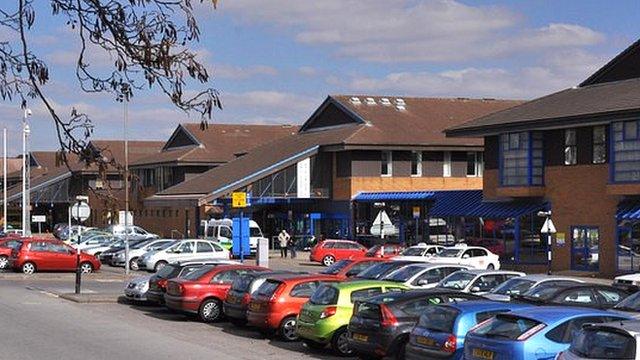
- Published16 October 2014

- Published16 October 2014
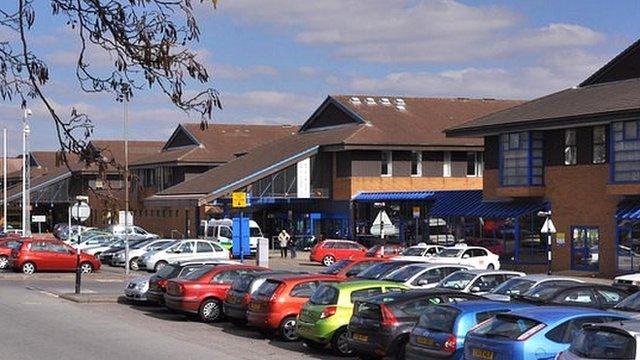
- Published13 May 2014
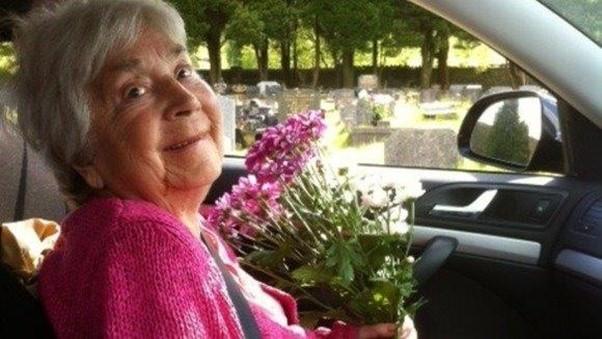
- Published13 May 2014
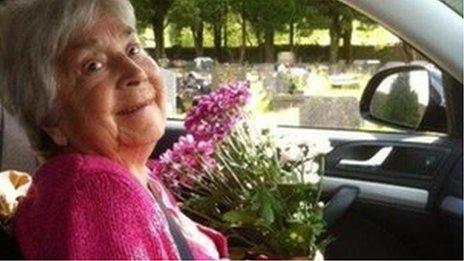
- Published17 September 2014
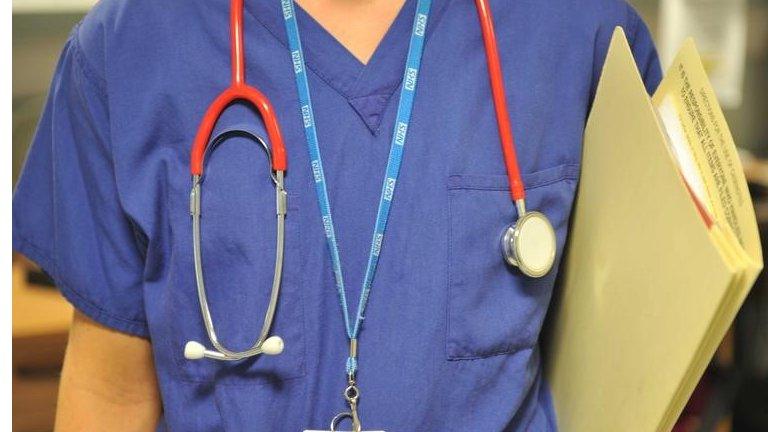
- Published25 July 2013

- Published7 August 2014
